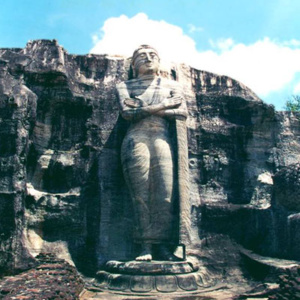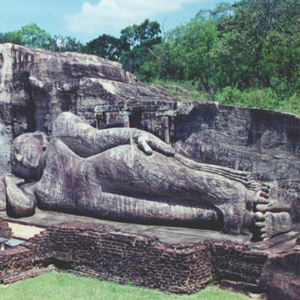


gal-viharaya
gal-viharaya-polonnaruwa
gal-viharaya-polonnaruwa-srilanka
The Gal Vihara or Uttarama is a temple rock temple that is located in the city of Polonnaruwa which is situated in the Northern Central Province of Sri Lanka. The Gal Viharaya is the brainwave of King Paramramabahu I. The main feature of this rock temple is the four rock statues of the Lord Buddha, which has been intricately engraved into the surface of a huge rock of granite. The statues consist of a collection of seated Buddha, a smaller seated statue embedded inside an artificial cave, a standing statue and a lie down statue. It is evident from the manner in which these statues have been carved that ancient Sinhalese sculpting and carving arts are indeed beautiful and carry a heavy meaning to each. This is why the Gal Vihara is the most visited testimonial of Sinhalese Art in Polonnaruwa.
The style of the images at Uttarama is different from the Anuradhapura Period as there are significant differences to be seen. Historians have argued that the standing image of the Lord Buddha showcases the disciple monk Ananda instead of the Lord Buddha. The statues have been carved taking the entire height of the rock.
What is left of the brick walls around these statutes indicate that each of them had their exclusive image houses. The Uttamarama is significant due to the fact that it was here that King Parakramabahu I conducted purifying of the Buddhist priesthood in the presence of a congregation of monks. The three fraternities – Abhayagiri Vihara, jetavanaramaya and Mahavihara were reconciled by the King and in the process corrupt monks were expelled from these fraternities. The King also drafted a code of conduct for these monks. The code of conduct has been recorded in writing on the identical rock face containing the images of the Lord Buddha.


